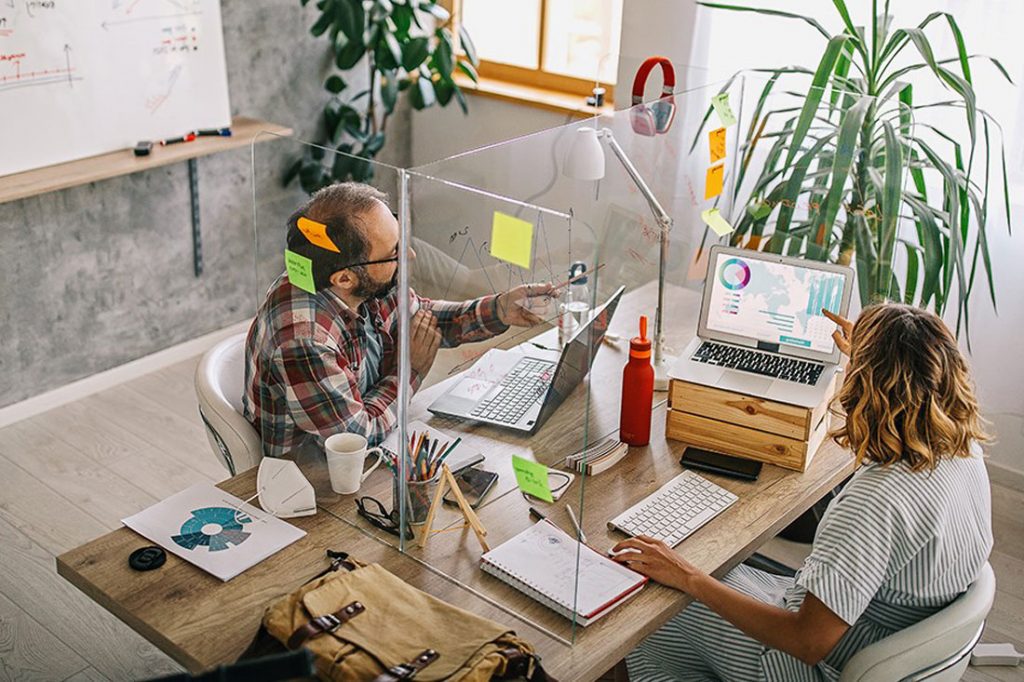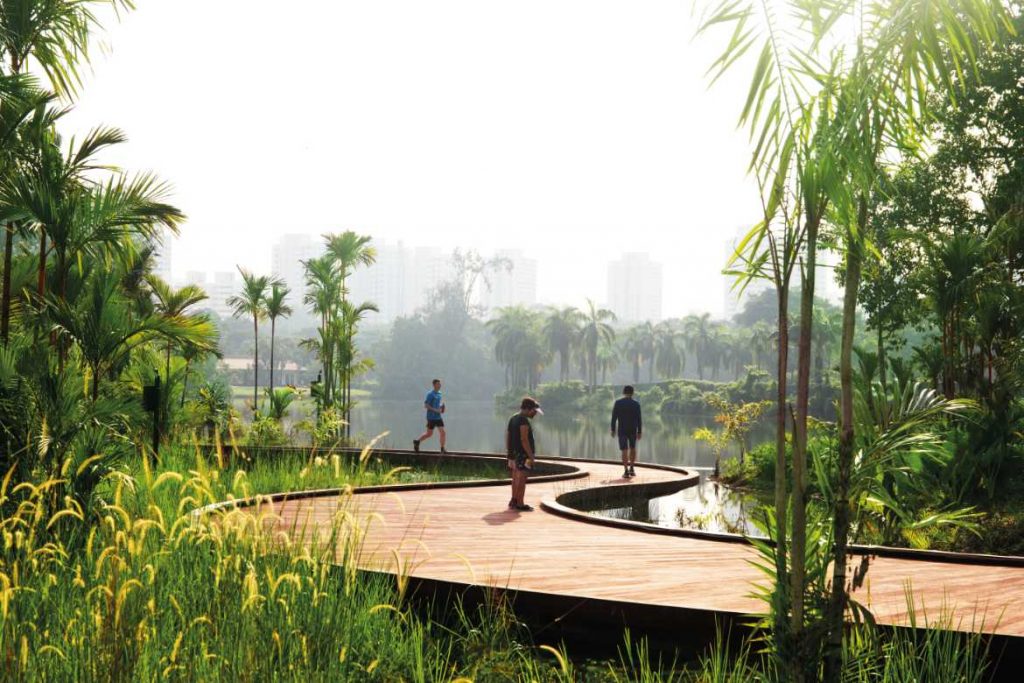As cities emerged from the pandemic with plans to become more resilient, it is an opportunity to engage people in better placemaking. Regular columnist Justin Zhuang shares his perspective.

WY-TO Group’s winning C40 Reinventing Cities Global Competition refreshes Bukit Timah Fire Station through repurposing and adaptive reuse. See full project here. Image courtesy of WY-TO Group
April 6th, 2022
Entrances manned by security guards. Haphazardly placed paper signage for directions. Navigating endless tape to get in and out of buildings. Getting around the city can feel very much like entering a war zone nowadays. The COVID-19 pandemic has not only disrupted our everyday lives but our urban landscape too. The sudden need for new screening protocols has led to many makeshift solutions that have upended the design of places and fragmented them into ugly, awkward and even dead spaces.
While once regarded as temporary inconveniences, measures such as screening and social distancing look likely to become a permanent part of our everyday with cities planning to live with COVID-19 as an endemic disease. How they are integrated into our built environment needs to be re-examined lest they permanently remake the city into a fortress.
Several building owners in Singapore have begun to install more permanent solutions. Gantry gates, once a common sight only in train stations and secure office towers, have popped up in shopping malls. While more secure than having people man a screening station, it is a jarring welcome into these spaces of leisure. The same goes for plastic screens that are increasingly popular in offices and dining establishments. The result is ‘clinical’ environments, which a recent study has found may not be very effective after all.

Architects and designers have also begun advocating for adaptable and flexible solutions such as multifunctional spaces as well as mobile barriers and furniture. These can be easily rolled out when needed and blend into existing designs. While we can expect more of these in up-and-coming projects, the greater challenge is in existing ones. How can old buildings be adapted in a meaningful and sustainable manner? Especially so in Singapore where land is a premium. Perhaps it requires an urban planning policy which can standardise these efforts and connect them together to create a more pandemic resilient city.
Private developments, however, are just a part of the solution. At the height of the pandemic, public places were the few spaces open for those seeking respite from working and studying all day at home. In Singapore, crowds thronged nature reserves and parks which have continued to serve as important getaways with overseas travel restrictions still in place. But such green spaces are just one of the city-state’s many types of public spaces. There are also public libraries, community centres and even the void decks of public housing estates. Each can take on new roles to alleviate some of the pressures that have arose with the home increasingly replacing the office and even school as the centre of people’s everyday lives.

For instance, some void decks and community centres already have senior activity centres and study corners. An obvious addition would be working spaces. Housing estates can also be equipped to support more pop-up events so that services can come to the residents, especially when movement is restricted during a pandemic. Imagine the multi-storey car park becoming a hive of activities instead of a storeroom for cars. Besides creating new uses, existing facilities such as the playground and neighbourhood gardens can be relooked by involving the residents in creating more distinct places.
Now more than ever, people have come to realise how ‘home’ is more than just the confines of their private abode. It is an opportune time to involve them more in ongoing efforts to rebuild the city and strengthen their connections with places. If there is anything the pandemic has reminded us of is that people are the life of cities. Without them, a city is simply a collection of desolate buildings and silent streets—an emptied place that is no better than an empty space.
This article was first published in Cubes Issue #103
A searchable and comprehensive guide for specifying leading products and their suppliers
Keep up to date with the latest and greatest from our industry BFF's!

In this candid interview, the culinary mastermind behind Singapore’s Nouri and Appetite talks about food as an act of human connection that transcends borders and accolades, the crucial role of technology in preserving its unifying power, and finding a kindred spirit in Gaggenau’s reverence for tradition and relentless pursuit of innovation.

Elevate any space with statement lighting to illuminate and inspire.

XTRA celebrates the distinctive and unexpected work of Magis in their Singapore showroom.

With the exceptional 200 Series Fridge Freezer, Gaggenau once again transforms the simple, everyday act of food preservation into an extraordinary, creative and sensory experience, turning the kitchen space into an inspiring culinary atelier.

The next phase for Sydney Olympic Park is now on exhibition as part of the SOP Master Plan 2050.

Seafarers’ intricate façade, designed by FK, is set to leave a lasting legacy on Melbourne’s urban fabric.
The internet never sleeps! Here's the stuff you might have missed

In northern Portugal, Studio Nicholas Burns has completed a refined and graceful winery building with rich local connections and a quiet landscape setting.

Removing the need for a conventional water stop at the shower entry, the Stormtech 120SCS shower screen support drain is ideal for installation in these increasingly popular residential spaces.